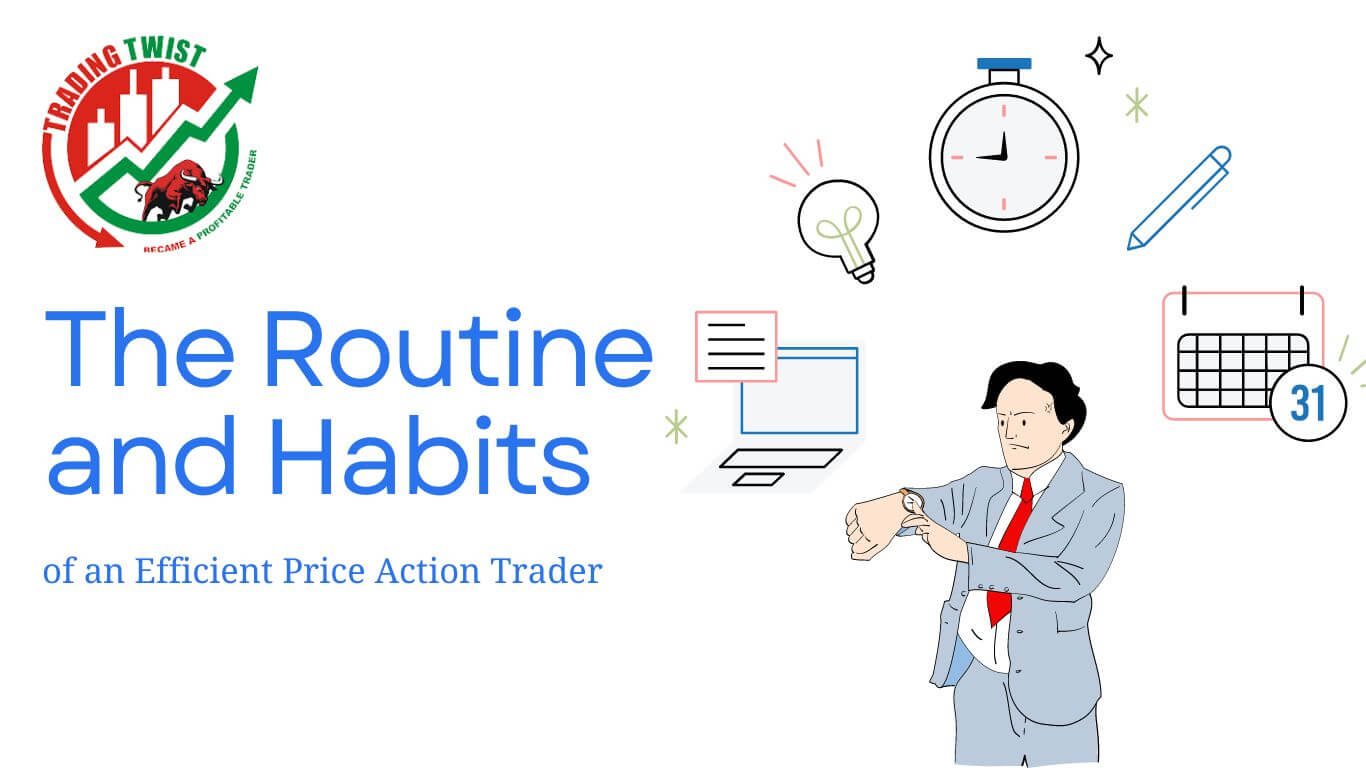
Developing a daily Routine and Habits is critical for efficient price action traders as it helps them to maintain focus and discipline in their trading activities. By waking up early and reviewing market news and data, traders can stay up-to-date on market developments and make informed decisions about their trades. This allows them to identify potential opportunities and risks, which can help them to make better trading decisions.
Setting achievable goals for the day is another important aspect of developing a daily routine. By setting goals, traders can prioritize their activities and work towards achieving specific objectives. This can help to increase motivation and productivity, as traders have a clear idea of what they need to accomplish each day.
In addition to setting goals, having a consistent Routine and Habits can help traders to stay disciplined in their trading activities. By establishing a Routine and Habits, traders can develop a habit of following a set schedule, which can help to avoid distractions and maintain focus on their trades. This can be particularly important during times of market volatility, where emotions can run high and impulsive decisions can lead to losses.
Overall, developing a daily Routine and Habits is essential for efficient price action traders as it helps them to stay organized, focused, and disciplined. By waking up early, reviewing market news and data, setting achievable goals, and maintaining a consistent routine, traders can increase their chances of success and achieve better trading results.
Maintaining a Trading Journal
Maintaining a trading journal is a critical practice for efficient price action traders. It provides a structured way to document their trading activities, which can help traders to track their progress, analyze their performance, and identify areas for improvement.
By recording details about each trade, such as the entry and exit points, trade size, and profits or losses, traders can gain valuable insights into their trading strategies. They can identify which trades were profitable and which ones were not, which can help them to refine their strategies and improve their overall performance.
In addition to documenting trades, traders can also record their emotions, thoughts, and observations about the market. This can provide valuable context for their trading activities and help them to identify patterns or trends in their behavior. For example, a trader may notice that they tend to make impulsive decisions during periods of market volatility, which can help them to adjust their trading strategies accordingly.
Maintaining a trading journal can also help traders to identify areas for improvement. By analyzing their performance over time, traders can identify patterns and trends in their trading activities. This can help them to pinpoint areas where they may need to improve, such as risk management or trade execution.
Overall, maintaining a trading journal is a critical practice for efficient price action traders. By tracking their progress, analyzing their performance, and identifying areas for improvement, traders can refine their strategies and improve their chances of success in the markets.
Using Price Action Strategies
Price action trading is a popular approach among efficient price action traders. It is a methodology that involves analyzing the price movement of security without relying on indicators or other technical tools. Instead, traders using price action strategies focus on analyzing the price movement itself and the context in which it occurs.
One of the key benefits of using price action strategies is that it allows traders to gain a deeper understanding of the market’s underlying dynamics. By analyzing price action, traders can identify key support and resistance levels, trends, and other important patterns in the market. This can help them to make more informed trading decisions based on the current market conditions.
Another benefit of using price action strategies is that they can help traders to filter out noise in the market. Technical indicators and other tools can be helpful, but they can also generate false signals or lead to overly complex trading strategies. By focusing solely on price action, traders can avoid these potential pitfalls and focus on the most important information.
Price action strategies can also be used to develop trading systems that are adaptable to changing market conditions. By analyzing price action and identifying key patterns and trends, traders can create trading systems that can adjust to changes in market volatility or other factors that may affect the market.
Overall, efficient price action traders rely heavily on price action strategies to analyze the markets. By focusing on price movement and the context in which it occurs, traders can gain a deeper understanding of the market’s underlying dynamics, filter out noise, and create adaptable trading systems that can help them to achieve success in the markets.
Managing Risk
Managing risk is a crucial aspect of trading for efficient price action traders. While trading involves taking on risk, traders aim to manage and minimize their exposure to market volatility in order to protect their capital and increase their chances of success.
One of the key risk management techniques used by efficient price action traders is position sizing. Position sizing involves determining the appropriate amount of capital to allocate to a particular trade, based on factors such as the trader’s risk tolerance, trading strategy, and market conditions. By sizing positions appropriately, traders can limit their potential losses while still allowing for the possibility of gains.
Another important risk management technique used by efficient price action traders is the use of stop-loss orders. A stop-loss order is an instruction to sell a security when it reaches a certain price level, in order to limit potential losses. By setting stop-loss orders at appropriate levels, traders can minimize their exposure to market volatility and protect their capital.








